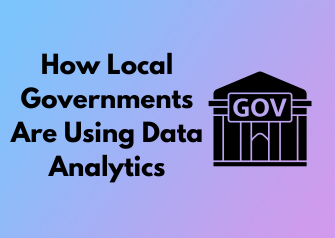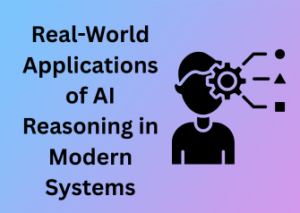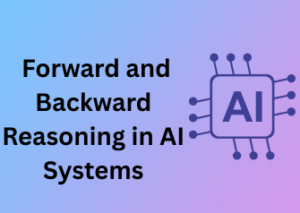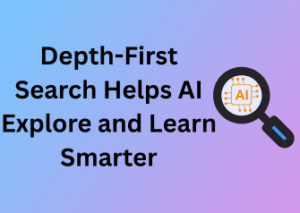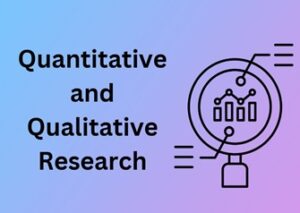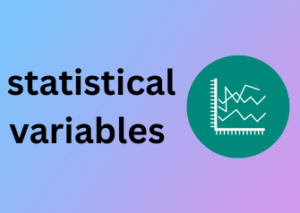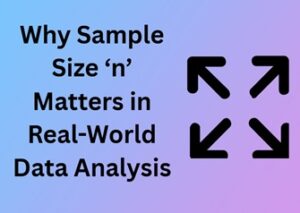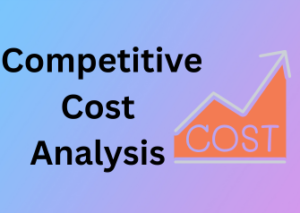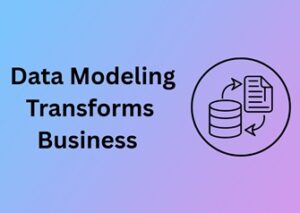It’s happening all around us, often without us realizing it – a quiet, transformative shift that’s changing how local governments operate. No, it’s not a massive infrastructure overhaul or a groundbreaking political initiative. It’s data, and its influence is proving to be indispensable in modern governance. Yet, what makes this revolution special is just how seamlessly it integrates into the fabric of our daily lives, helping governments make smarter, faster, and more efficient decisions.
But what does that mean for you, the citizen? Let’s break it down.
The Power of Everyday Data
Whether it’s deciding where to repair roads, optimizing public transportation routes, or ensuring emergency responders are dispatched swiftly, data is doing the heavy lifting behind the curtain. Local governments now rely heavily on analytics drawn from various sources – sensors, city databases, public feedback, and even social media – to fine-tune their services.
Think about it. That smooth morning commute you experienced may have been made possible by traffic flow data used to synchronize traffic lights. That cleaner park you enjoyed last weekend? Local sanitation departments may have adjusted waste collection schedules after analyzing usage patterns and pinpointing high-traffic times. These decisions rarely make headlines, but they make your day better.
Real-Time Insights, Real-Time Impact
One of the most exciting things about this “silent revolution” is how quickly governments can now act on new data. Real-time analysis enables local authorities to pivot when necessary, ensuring services remain timely and relevant. For example:
- Storm preparedness: When weather warnings roll in, cities can use data to predict which areas are most vulnerable and allocate emergency teams preemptively.
- Health and safety: During a public health crisis, governments can monitor infection rates in specific neighborhoods and adjust resource deployment in real-time to problem areas.
- Energy usage: Smart grids can analyze energy consumption patterns and help utilities prevent outages while promoting sustainability.
Tailoring Services to Meet Unique Community Needs

One of the most impressive aspects of data analytics is how it ensures that no two communities are treated exactly the same. Every city, district, or neighborhood has its own needs, challenges, and demographics. With data, local governments can zero in on the nuances that make each area unique.
For instance, imagine a neighborhood with an aging population. Data can help flag the need for additional public health services, like mobile health clinics. Alternatively, a bustling downtown area might show a need for expanded public Wi-Fi and greener public spaces to accommodate younger, tech-savvy residents working remotely.
From Traffic Lights to Trash Cans: Real-World Uses of Municipal Data
Ever wondered how your city knows when to fix a traffic jam or why your trash pickup schedule suddenly became more efficient? The secret lies in how local governments are leveraging data. Today’s city leaders are getting creative about solving problems, using analytics not just to make systems smarter but to improve the quality of life for everyone. Let’s dive into some tangible examples of how municipal data is transforming daily living—one byte at a time!
Smarter Traffic Systems: Turning Congestion into Flow
One of the most visible examples of data analytics at work is in traffic management. Many cities now use sensors and cameras to gather real-time data about traffic flow. This data feeds into algorithms that adjust traffic light timing to reduce congestion. For example, during rush hour, intersections might prioritize the busiest routes, keeping cars moving instead of stopping unnecessarily. By reducing jams, cities help commuters save time and cut down on emissions. Isn’t it amazing how something as simple as traffic lights can get “smarter” with a little data magic?
Trash Collection Made Smarter
Let’s talk trash! Traditional waste collection schedules often feel arbitrary. But now, some cities are implementing IoT (Internet of Things) technology into trash bins. These “smart” bins are equipped with sensors to monitor their fill levels. Using this data, waste management teams can optimize pickup routes. Instead of driving to every bin on a fixed schedule, they focus on the areas that need attention. This not only saves fuel and cuts costs but also ensures overflowing trash doesn’t become a health or environmental hazard. It’s efficiency in action!
Energy Optimization through Smart Grids
Municipal energy grids are also quickly adopting smarter technology. Rather than using outdated systems, many cities now rely on smart meters to gather data about energy consumption patterns in homes and businesses. This information helps utilities predict demand surges and supply energy more efficiently. On top of that, some cities use predictive analytics to identify potential outages before they occur, leading to quicker repairs and less downtime. How’s that for future-proofing?
The Role of Public Safety
Have you noticed new surveillance cameras, sensors, or enhanced first-responder systems in your city? That’s municipal data hard at work. Police and emergency services often use predictive analytics to identify high-crime areas or deploy resources more effectively. Shot detection systems, which use microphones to identify gunfire and alert law enforcement instantly, are an excellent example. These innovations mean a safer city for everyone, all thanks to timely, data-driven decision-making.
Breaking Down the Barriers: How Governments Access and Manage Data
Data is everywhere, and governments are no exception—local authorities are hungry for the insights that data can offer. But let’s be real here: wrangling that data isn’t always simple. Between digitizing old records, navigating privacy laws, and managing a tangle of legacy systems, local governments have a tough task ahead of them. So, let’s unpack how they’re working to break down the barriers and use data effectively for smarter governance.
1. Tackling Outdated Systems with Modern Tech
First things first: many local governments are dealing with outdated systems. Think ancient spreadsheets, siloed databases that can’t talk to each other, or paper files gathering dust. Sound familiar? Many municipalities are turning to powerful cloud platforms and data integration tools to centralize and modernize their data systems. By migrating critical records to the cloud, local governments can make their data more accessible while reducing costs associated with maintaining older systems.
For example, cities like Denver and Boston have embraced centralized data dashboards, helping decision-makers easily access real-time stats on everything from public transit to emergency responses. The bottom line? Investing in infrastructure isn’t just cool tech—it’s a necessity for smarter, faster decision-making.
2. Don’t Go It Alone: Partnerships Are Key
Let’s face it: governments have limited resources. To combat this, many municipalities are forming partnerships with private tech companies, universities, and nonprofit organizations. Collaborations like these help local governments tap into expertise they might not have on hand.
Take, for instance, the partnership between New York City and universities like NYU. Together, they’ve launched programs that provide students with the opportunity to analyze city data, creating real-world solutions while also helping the city make sense of its mountains of information. This win-win formula allows governments to innovate without breaking the bank—or their IT departments.
3. Busting Silos for Seamless Collaboration
One of the biggest hurdles in government data management? Departments that run their data like private islands. The only problem? Islands are great for vacations, not for governance. Breaking down silos between departments is essential for creating a unified approach to data management.
That’s where interdepartmental data sharing initiatives come in. Local governments like Los Angeles have adopted integrated systems that combine police, public works, and city planning data into one cohesive ecosystem. This means better outcomes for residents, like improved emergency response times and more precise infrastructure planning.
4. Focus on Easy-to-Use Tools
Managing data is one thing; navigating it is another. Not every city employee is also a tech whiz, and that’s okay! The solution? Local governments are increasingly turning to user-friendly analytics platforms that work for all skill levels.
Many tools now come with drag-and-drop interfaces, intuitive visual dashboards, and automated reporting. Officials in smaller towns, for example, have started using these platforms to track metrics like road repairs or water usage without needing to become data scientists. The easier the tools, the broader the adoption—and the bigger the impact!
5. Building Trust Through Training
Finally, none of this data magic happens unless employees and decision-makers know what they’re doing. One under-appreciated aspect of breaking down barriers is training staff on how to collect, analyze, and use data responsibly. Tailored workshops and webinars are helping public employees get comfortable with not just new systems, but also the culture of data-driven decision-making.
Community Voices in Numbers: Turning Citizen Feedback into Actionable Insights
When was the last time your community held a town hall or sent out a neighborhood survey, and you wondered, “Is anyone really listening?” Thankfully, with the rise of data analytics, local governments are proving that they are not only listening but also taking action—transforming community feedback into meaningful change. Let’s unpack how governments are converting conversations and concerns into data-driven solutions.
Why Citizen Feedback Matters More Than Ever

Local governments are closest to the day-to-day lives of their constituents, meaning the issues raised by residents often have an immediate and noticeable impact. From the state of local parks to concerns about public transportation, every opinion matters. But here’s the big challenge: feedback comes from many sources—social media comments, online surveys, emails, and even informal chats with municipal staff. This creates an overwhelming amount of information to process. Without the magic of data analytics, much of this feedback could get lost in the noise.
Leveraging analytics, governments can now quickly identify pressing concerns, analyze patterns, and prioritize actions. It’s not just about gathering opinions—it’s about giving those opinions a voice, a platform, and most importantly, a solution.
From Complaints to Change: The Data Revolution
So, how does it all work? Let’s break it down:
- Centralized Feedback Systems: Modern platforms consolidate all types of community input—whether it’s an online comment about potholes or a request for better recycling bins. Tools like natural language processing (NLP) can sift through data, identifying keywords or trends to highlight what residents care about most.
- Sentiment Analysis: Governments can now gauge general public sentiment. For example, software can distinguish whether residents are frustrated over slow repair work or delighted by the new bike path, helping prioritize what needs urgent attention.
- Data-Driven Prioritization: By analyzing feedback geographically, city planners can see if certain neighborhoods are facing disproportionate issues, ensuring resources are distributed fairly.
This not only improves services but also strengthens the connection between residents and their local government. It’s the ultimate “we hear you” moment.
Engagement = Empowerment
Imagine this: A small town holds a virtual workshop about improving accessibility in public spaces. Dozens of opinions pour in about sidewalks that need repairing, elevators that break down, and the planning of more inclusive events. With the help of data analytics, the local government isn’t just noting what’s being said—they’re categorizing, comparing, and creating actionable plans.
But the benefits go beyond efficient planning. When citizens see their feedback leading to real improvements, they’re more likely to participate in future discussions. This creates a powerful loop: engaged communities provide better data, and better data leads to smarter solutions. It’s a win-win.
Practical Steps for Governments: Listening Smarter
If you’re wondering how governments can maximize this approach, here are some tried-and-true tips:
- Invest in tools for real-time feedback collection, like mobile apps or interactive websites.
- Use AI-powered tools to sort, classify, and analyze feedback efficiently.
- Share the results transparently—publish dashboards or reports showing what actions are being taken based on the community’s input.
Transparency Redefined: Data’s Role in Accountability and Public Trust
Governments and residents are collaborators in shaping vibrant, functional communities. One of the most powerful tools local governments now have at their disposal is data analytics. But let’s be honest—when you hear “data,” it might sound cold or complex. However, the beauty of data lies in how it fosters transparency, accountability, and trust, which are the cornerstones of good governance.
In this section, we’re diving deep into how local governments are using data not just to make decisions but to open up their processes for public scrutiny, redefine relationships with citizens, and build stronger bonds of trust. Sounds exciting, right? Let’s unpack how this works.
Building Public Trust Through Open Data
Have you ever wondered where your tax dollars go? Or questioned how effective your city’s initiatives really are? Local governments are increasingly turning to open data platforms to answer these very questions. By releasing datasets to the public—like budgets, crime statistics, or even traffic trends—they’re showing they have nothing to hide.
Imagine being able to pull up a user-friendly report on your city’s website that shows exactly how much of the budget is allocated to schools or housing developments. This kind of openness helps dismantle skepticism and fosters trust between citizens and their leaders. Bonus? Citizen involvement often increases as people feel more informed and empowered to participate in local conversations. Transparency is not just a buzzword; it’s the gateway to collaborative progress.
Accountability in Action
Accountability is another area where data shines. Numbers don’t lie—they tell stories. For instance, if a city announces a campaign to reduce crime by 20% in five years, data analytics becomes the tool to prove (or disprove) their success. By hosting dashboards that track key progress metrics or trends, governments can be held to their promises in real-time.
Moreover, analytics can identify inefficiencies within government programs, ensuring resources are directed toward what truly works. Leaders are held accountable not just at election time but in every decision they make. It’s a win-win for citizens and officials alike—a system built on results rather than rhetoric.
Making Data Accessible (Without the Jargon!)
Okay, let’s address the elephant in the room: sometimes data can feel overwhelming. Fancy graphs, confusing terms, and spreadsheets that look like they belong in rocket science? No, thank you. But here’s the good news—governments are working harder than ever to break it all down into simple, digestible formats.
Through easy-to-navigate dashboards, mobile apps, or even live town halls featuring visual data presentations, local municipalities are taking the extra step to make information accessible to every citizen, regardless of technical expertise. Got ten minutes? You can probably find registered benchmarks or updates on a city project that’s relevant to you. This makes the complex world of governance feel refreshingly inclusive.
Feedback-Focused Governance
Transparency isn’t just about showing data; it’s about listening, too. Some cities now pair their analytics efforts with platforms for public input. Think online surveys, apps to report local issues, or even interactive polls. The result is a holistic approach where data and public sentiment work together to refine policies and address areas of concern.
Why Efficiency Is Critical
Let’s face it: managing a city or town is no small feat. From infrastructure upkeep to public safety, and everything in between, government officials must juggle a long list of responsibilities. Now add tight budgets and increased public expectations to the mix—it sounds overwhelming, right? This is exactly where data analytics comes to the rescue. By harnessing the right data, governments can uncover inefficiencies, channel resources more effectively, and focus their efforts where it counts the most.
How Analytics Streamline Operations
So, what does “maximizing efficiency through analytics” actually look like in the real world? Here are just a few standout examples of how governments are making smarter moves using data:
- Predictive Maintenance: Rather than waiting for breakdowns, municipalities are using analytics to predict when equipment—like streetlights, water pipes, or city vehicles—might fail. By being proactive, they save money on emergency repairs and minimize service disruptions.
- Resource Allocation: With tools that process real-time data, cities can quickly identify where their resources are most needed, whether it’s distributing disaster relief supplies or deploying first responders to high-risk areas during emergencies.
- Energy Savings: Climate-conscious cities are getting smarter about resources like electricity and water. By analyzing usage patterns, governments can tweak operations, like dimming lights during low-traffic hours, to save energy and reduce costs.
- Workforce Planning: Data helps optimize staffing schedules, ensuring the right number of workers are on hand when demand is highest. For example, libraries may adjust hours based on foot traffic data to cater to peak usage times.
Best Practices for Smarter Efficiency
To inspire greater confidence in these analytics-driven approaches, governments should follow best practices for integrating data solutions:
- Start Small, Aim Big: Governments don’t need a major technological overhaul to get started. Pilot projects—like analyzing traffic patterns to improve stoplight timing—can showcase early wins and build momentum.
- Train the Workforce: The best data tools are only as good as the people using them. Investing in digital skills training for public employees ensures that staff are equipped to analyze, interpret, and act on data effectively.
- Partner with Tech Experts: Governments can team up with private companies or local universities to implement cutting-edge analytics tools without blowing their budgets on in-house solutions.
Navigating Ethical Lines: Balancing Privacy and Insight in Public Data Strategies
In the age of big data, local governments are collecting and utilizing an unprecedented amount of information. From traffic patterns to citizen feedback, these data-driven insights are helping municipalities make smarter, faster, and more efficient decisions. However, this treasure trove of data also brings a critical question to the forefront: How do governments balance the need for actionable insights with the responsibility of protecting individual privacy?
It’s a challenging tightrope to walk, but also an immensely important one. Let’s explore how local governments can navigate this tricky terrain while ensuring both ethical governance and meaningful results.
1. The Importance of Building Trust
At the heart of ethical data use lies trust. Residents need to know that their personal information is handled responsibly and isn’t being misused. Imagine willingly sharing your location data for a city initiative to reduce traffic congestion, only to later find it was sold to third parties. That’s a surefire way to erode public confidence.
Governments, therefore, must emphasize transparency when it comes to how citizen data is collected, used, and stored. A great start? Clear and easily-accessible privacy policies that explain exactly what’s being done with the data—and why. When people understand the benefit to their community, and how their privacy will remain protected, they’re far more likely to get on board.
2. Data Anonymization: A Win-Win Solution
If privacy and insight feel like opposing forces, data anonymization is where they meet in the middle. This strategy removes personally identifiable information (PII) from datasets, allowing governments to analyze trends and behavior without compromising individuals’ identities.
For instance, instead of analyzing exactly where an individual commutes each day, cities can examine generalized travel flows to determine where public transportation improvements are needed most. The data helps guide decision-making, and residents’ sensitive information stays secure—win-win!
3. Setting Ethical Boundaries
Not all data is fair game, even if it’s technically accessible. Governments must establish clear ethical boundaries about what information they collect and how it’s applied. Just because a city *can* track a citizen’s activity doesn’t mean it *should.* Tools like data ethics frameworks can help municipalities weigh the risks and benefits of a data project before diving in.
Take facial recognition technologies, for example, a controversial tool some cities want to use for public safety. While it may improve security, it also raises serious concerns about surveillance overreach, racial biases, and profiling. Decision-makers must tread carefully, consulting experts and citizen groups along the way.
4. Engage the Community in the Conversation
The most impactful privacy policies don’t come from a small group behind closed doors—they’re shaped through open dialogue with the community. Governments can hold town halls, distribute surveys, or even form citizen advisory panels focused on data issues.
This two-way conversation not only ensures policies align with public values, but it also empowers citizens to take an active role in shaping how their data is handled. When residents feel engaged and heard, trust grows—and that’s the backbone of any successful governance model.
5. Constantly Reassess the Landscape
Technology and privacy concerns evolve rapidly. What seemed ethical a few years ago might now fall into murky territory. Local governments must revisit their policies and practices regularly, staying ahead of developments in data security and public sentiment. From leveraging third-party audits to investing in ongoing staff training, proactive adjustments are essential for maintaining ethical operations in the long term.
In the end, ethical data use isn’t just about avoiding missteps—it’s about prioritizing people. When local governments respect privacy while harnessing insight, they foster a culture of accountability, trust, and innovation that benefits everyone. By balancing these complex priorities, municipalities can unlock the full potential of data analytics while still holding the public’s best interests close to heart.

